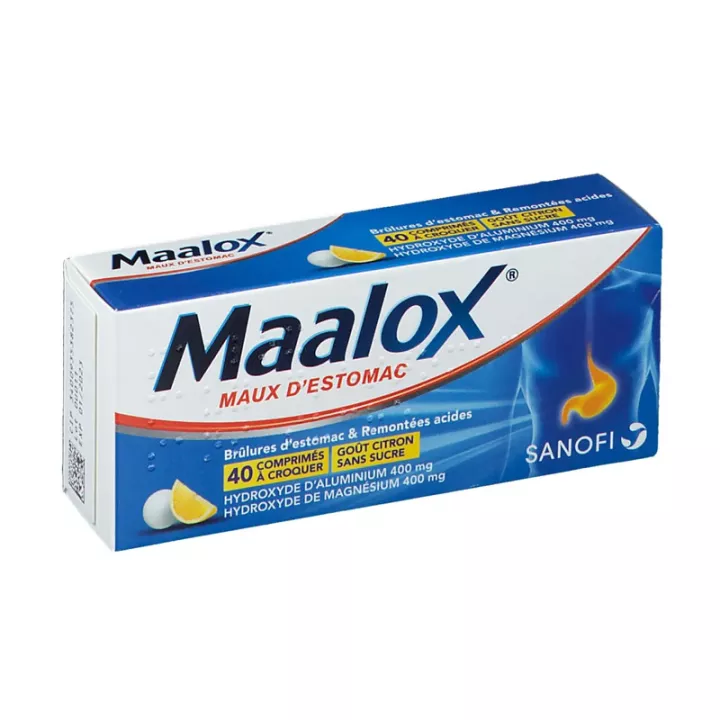NOTICE
ANSM - Last updated: 19/12/2016
Name of the medicinal product
MOXYDAR tablet for oral suspension
Aluminum oxide, aluminum phosphate, aluminum hydroxide, guar gum
framed
Please read this leaflet carefully before you start taking this medicine because it contains important information for you.
You should always take this medication exactly as prescribed in this leaflet or by your doctor or pharmacist.
· Keep this leaflet. You might need to read it again.
· Ask your pharmacist for advice or information.
· If you experience any of the side effects, talk to your doctor, or your pharmacist. This also applies to any side effects not mentioned in this leaflet. See section 4.
· You should talk to your doctor if you do not feel better or feel less well
Do not use this medication for children.
What is in this leaflet?
1. What is MOXYDAR tablet for oral suspension and when is it used?
2. What should be known before taking MOXYDAR tablet for oral suspension?
3. How to take MOXYDAR tablet for oral suspension?
4. What are the possible side effects?
5. How to store MOXYDAR tablet for oral suspension?
6. Package contents and other information.
1. WHAT IS MOXYDAR, tablet for oral suspension AND WHAT IT IS USED FOR?
Pharmacotherapeutic group: Antacids, ATC code: A02AD01
This medication is indicated in the pain, burning or choking of the stomach or esophagus and the symptomatic treatment of gastroesophageal reflux disease .
2. BEFORE YOU TAKE MOXYDAR tablet for oral suspension?
Do not take MOXYDAR tablet for oral suspension:
· If you have severe kidney disease (kidney function failure),
· if you are allergic (hypersensitive) to the active ingredients or any of the other ingredients of this medication mentioned in section 6.
Warnings and Precautions
Talk to your doctor or pharmacist before taking MOXYDAR tablet for oral suspension.
Special warnings
If the disorders do not go away within 7 days, consult your doctor.
If the pain is associated with a fever, vomiting, consult your doctor immediately .
Precautions for use
DO NOT TAKE THIS MEDICINE WITHOUT MEDICAL ADVICE in case of chronic dialysis.
Anti-acids can decrease the effect of many drugs. You should always report any other medications you are taking to your doctor or pharmacist.
As a precaution, this drug should be taken at a distance from other medicines (2 hours apart if possible).
In addition to the use of this medication, it is recommended to follow certain hygiene-dietetic rules:
· avoid going to bed immediately after meals,
· do not sleep flat (elevate the head of the bed to decrease the frequency of night reflux),
· avoid prolonged work, bend leaning forward (cleaning, gardening ...),
· avoid over-abundant meals.
Other medicines and MOXYDAR tablet for oral suspension
Inform your doctor or pharmacist if you are taking, have recently taken or may be taking any other medicines.
MOXYDAR tablet for oral suspension with food, drink and alcohol
Not applicable.
Pregnancy and breast feeding
This medication will only be used during pregnancy on the advice of your doctor. If you discover that you are pregnant during treatment, consult your doctor as he alone can judge the need to continue.
This medication may be prescribed during breast-feeding.
Ask your doctor or pharmacist for advice before taking any medicine.
Sport
Not applicable.
Driving and using machines
MOXYDAR has no or negligible influence on the ability to drive and use machines.
3. HOW TO TAKE MOXYDAR tablet for oral suspension?
Always take this medication exactly as prescribed by your doctor or pharmacist. Check with your doctor or pharmacist if you are unsure.
Dosage
Symptomatic treatment of pain associated with oeso-gastroduodenal disorders
One tablet at the time of the painful attacks without exceeding 4 catches per day.
Symptomatic treatment of gastroesophageal reflux disease
· In the attack period: 1 tablet after each of the 3 meals and an additional one in case of pain for 4 to 6 weeks;
· In maintenance treatment: 1 tablet at the time of the pain.
Administration mode
Oral use.
Put the tablet in a glass of water. After complete disintegration of the tablet, stir the suspension a few moments and then ingest the suspension obtained. Possibly rinse the glass with a little water and ingest again.
Duration of treatment
The duration of treatment varies according to the symptomatology.
If you take more MOXYDAR tablets for oral suspension than you should:
Immediately consult your doctor or pharmacist.
If you forget to take MOXYDAR tablet for oral suspension:
Do not take a double dose to make up for the missed dose .
If you stop taking MOXYDAR tablet for oral suspension:
Not applicable.
If you have any further questions on the use of this medication, ask your doctor or pharmacist.
4. WHAT ARE POSSIBLE SIDE EFFECTS?
Like all medicines, this medication can cause side effects, although not everybody gets them.
· constipation / diarrhea,
· decreased phosphorus levels in the blood, in prolonged use or at high doses.
Declaration of side effects
If you experience any side effects, talk to your doctor or pharmacist. This also applies to any side effects not mentioned in this leaflet. You can also report adverse reactions directly via the national reporting system: National Agency for the Safety of Medicines and Health Products (ANSM) and network of Regional Centers of Pharmacovigilance - Website: www.ansm.sante.fr
By reporting adverse reactions, you are helping to provide more information about the safety of the drug.
5. HOW TO STORE MOXYDAR tablet for oral suspension?
Keep this medicine out of the reach and sight of children.
Do not use this medicine after the expiry date which is stated on the package. The expiry date refers to the last day of that month.
This medicine does not require special precautions for storage.
Do not throw any medicines into drains or rubbish. Ask your pharmacist to remove any medications you are no longer using. These measures will help protect the environment.
6. PACKAGE CONTENTS AND OTHER INFORMATION
What MOXYDAR contains, tablet for oral suspension
· The active substances are:
Aluminum oxide hydrate ............................................. .................................................. ... 500.0 mg
Magnesium hydroxide ............................................... .................................................. .. 500.0 mg
Aluminum Phosphate hydrate ............................................. ............................................... 300.0 mg
Coated guar gum ............................................... .................................................. ......... 200.0 mg
Quantity corresponding to guar gum ............................................. 198.2 mg
For a tablet of 1.565 g
· The other components are:
Sodium cyclamate, sodium saccharin, magnesium stearate, mint flavor *, siméticone, sorbitan oleate, polysorbate 80.
* Composition of the mint flavor: essential oils of mint deterpenated and essential oils of mint atomised on acacia gum support.
What is MOXYDAR tablet for oral suspension and contents of the pack
This medication is in the form of a tablet for drinkable suspension.
Box of 30 tablets or 60 tablets.
Not all pack sizes may be marketed.
Marketing Authorization Holder
LABORATOIRES GRIMBERG SA
19 RUE POLIVEAU
75005 PARIS
Marketing Authorization Operator
LABORATOIRES GRIMBERG SA
ZA DES BOUTRIES
RUE VERMONT
78704 CONFLANS SAINTE HONORINE CEDEX
Maker
LABORATOIRES GRIMBERG SA
ZA DES BOUTRIES
RUE VERMONT
78704 CONFLANS SAINTE HONORINE CEDEX
Names of the medicinal product in the Member States of the European Economic Area
Not applicable.
The last date on which this leaflet was revised is:
[to be completed later by the holder]
Other
Detailed information on this medicine is available on the ANSM website (France).













